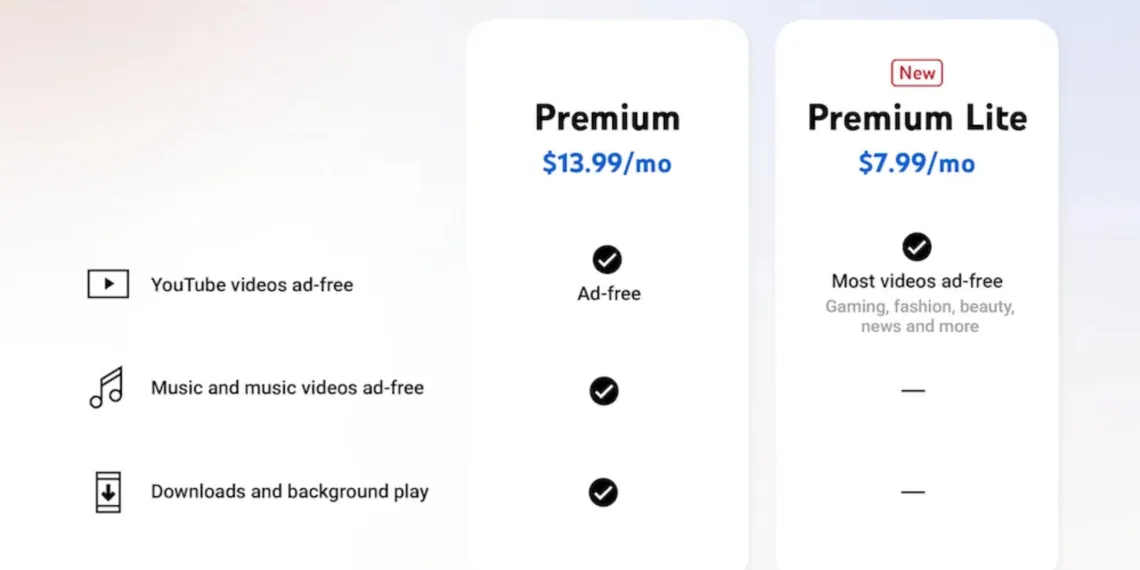Recently, Google's increases in YouTube Premium pricing have left customers with a negative impression, exacerbated by its erratic attempts to introduce a lower-cost subscription tier. Initially launched in 2021 under the name YouTube Premium Lite, the service was discontinued in 2023, only to be reintroduced in late 2024 for select markets in another trial phase.
Today, Google has made the service available in the United States at the price of $7.99 per month, a significant discount compared to the $13.99 charged for the standard subscription. However, a word of caution: the company refers to this as a “pilot,” meaning the features and pricing structure could change, or the service might be entirely discontinued.
At first glance, this isn't a completely ad-free experience. YouTube Premium subscribers can enjoy most videos without ads, including content from areas like gaming, lifestyle, and news. However, ads will still be present in Shorts and music videos.
“With Premium Lite, users can enjoy their favorite content with fewer interruptions,” the company stated in a blog update. There are intentions to roll this tier out to more regions later in the year, extending beyond its initial small-scale test locations.

During last year's testing phase, Google referred to the ads as “limited,” informing YouTube Premium Lite subscribers that ads would only appear when searching for particular content. While this detail wasn't prominently highlighted in the latest announcement, it was subtly included in the marketing materials.
You Will See Ads, Mostly
With the new Premium Lite, users can expect ads in many categories, which feels like a step backwards for subscribers who seek fewer interruptions. Additionally, the inclusion of YouTube Music Premium has been removed, meaning that ad-free music streaming is now a feature exclusive to the more expensive standard plan.
Moreover, the budget-friendly subscription does not allow offline downloads for watching videos without internet connectivity. For many users, this feature is invaluable, especially when trying to avoid buffering or poor streaming quality on mobile networks. It’s also great for binge-watching seasons of shows.
Another significant limitation is the absence of background play. This means that the YouTube app must remain active on the screen, cutting into battery life and hindering the multitasking experience. Google pitches this as finding “the right balance of features and benefits,” but many users may disagree, especially those who enjoy listening to podcasts or other audio with their devices locked.






